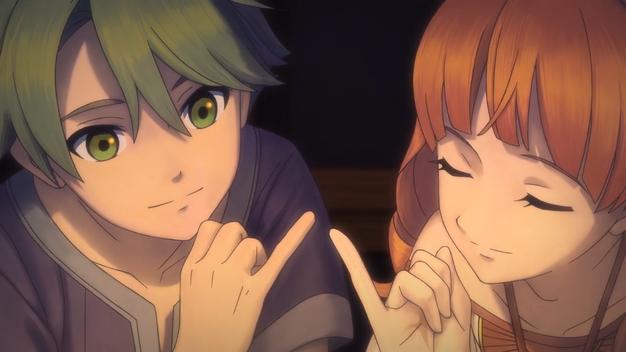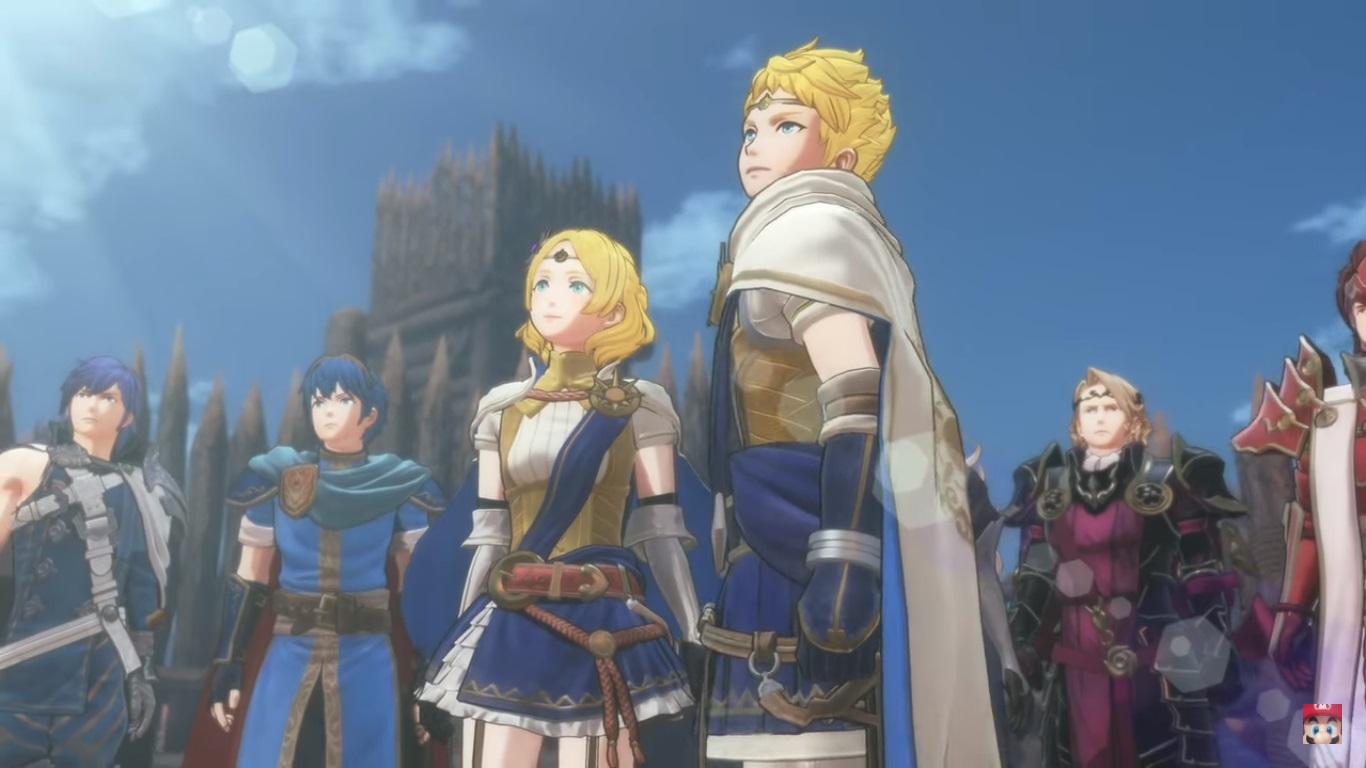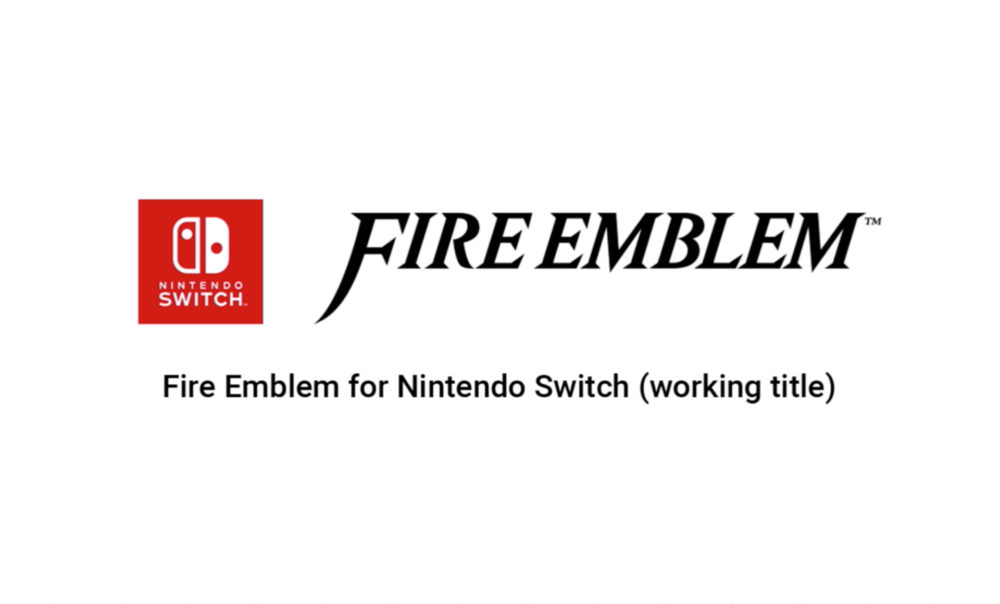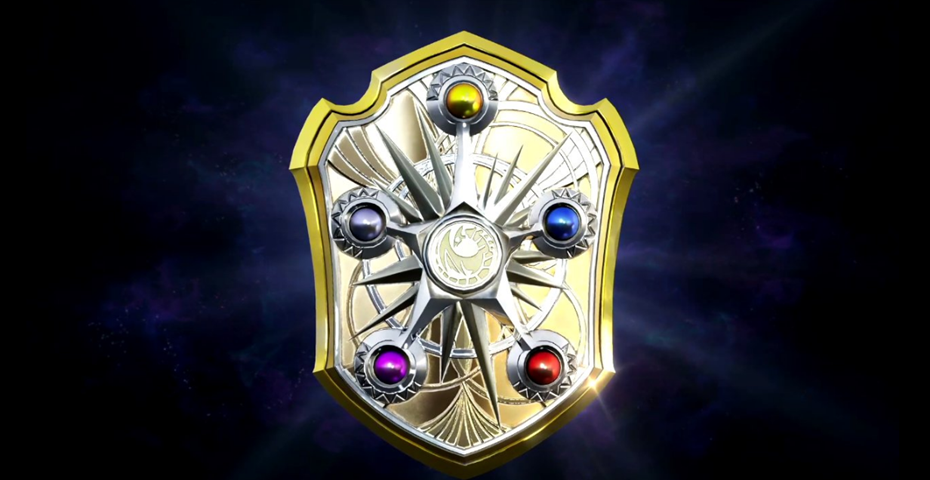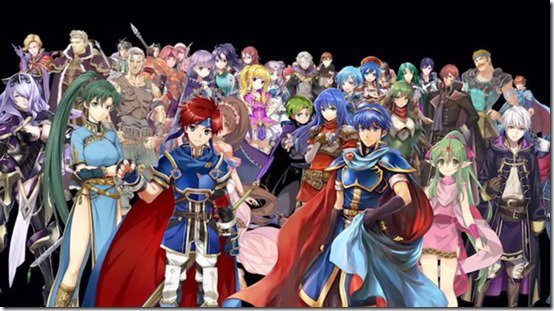
Fire Emblem has seen a resurgence in popularity thanks largely to the success of Awakening, Fates and Echoes: Shadows of Valentia on the Nintendo 3DS and Heroes on mobile devices. Ignoring the spin-off titles Fire Emblem Warriors and Tokyo Mirage Sessions ♯FE, Fire Emblem: Three Houses marks the first time the series has landed on a home console since 2007’s Fire Emblem: Radiant Dawn on the Wii. The game is a natural progression for the series, offering deeper story and character development, exploration options and some refinements to the tried and true battle system. It has been a long time coming, but Fire Emblem: Three Houses is a real winner for fans and newcomers alike.
Fire Emblem: Three Houses takes place on the fictional continent of Fódlan where the ruling nations of the Adrestian Empire, the Holy Kingdom of Faerghus and the Leicester Alliance are at peace. At the centre is the Garegg Mach Monastery, which is home to the religious faction the Church of Seiros and the Officer’s Academy. Players start the game as a mercenary named Byleth, who rescues students of the Academy when they are being chased by bandits. This brings Byleth to the attention of the Church, who offer him/her a teaching position after hearing of their skill. The school is split between three houses – The Black Eagles, Blue Lions and Golden Deer – which are comprised of nobles and commoners from each of the ruling nations. Players are briefly introduced to the students of each House and will make the important choice of which one they will lead in academics and battle.

The role of Professor is quite an interesting take from a story perspective. Your students look up to you as a role model and often seek guidance for personal matters in addition to the game’s larger plot. You can see how they react to you and each other, witnessing bonds form over time. As your students warm up to you they will reveal their backstories, which quite often leads to you growing fond of characters you were not initially drawn to during those first introductions. You will also have similar interactions with other faculty members. Fire Emblem: Three Houses does an incredible job of character development, to the point it outshines the main plot.
Not spoiling too much, the plot focuses on a greater conspiracy where a villain known as The Flame Emperor is at odds with the beliefs and politics of the Church. At the start of the game Byleth also has visions of a mysterious girl named Sothis only he/she can see and talk to. There are religious undertones along with the mystery of who The Flame Emperor is and what their true intentions are. There are clues scattered throughout the story and it is easy to predict where it is heading, but nonetheless it holds your interest from beginning to end. In the middle of the story there is also a time skip which lets you see how your students have grown into adulthood. The plot does deviate depending on which House you choose to lead, but major events will largely stay the same and swap out characters for those who are in your House (with the exception of the Black Eagles which has two story branches to follow). Endings change as well, and you also get the benefit of interacting with and learning the backstories of different students, so there is significant replay value for those who want to go back and teach the other Houses. Again, the character development is what really drives the plot and appeal of this game.
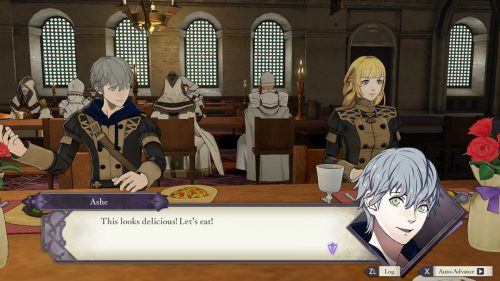
Fire Emblem: Three Houses has a monthly calendar system which advances both in-game time and the plot. At the start of the month you will receive funds and be assigned a story mission which takes place towards the end of the month. You then have a degree of freedom as to what you do for the rest of the month. On Mondays-Saturdays you instruct classes, which is mostly automated while you watch a pixelated avatar progress across the calendar. On the Monday you can customise individual student study goals that will ideally reflect which unit class (Mage, Swordsman, Axe Wielder, Knight, etc) they will be on the battlefield. Mage characters for example will study faith and magic, while Assassins will study swords and bows. You can alter study goals manually or occasionally students will prompt you that they wish to change their current studies and work towards becoming a different unit class. The game discreetly encourages you to have a balanced team via these prompts, which is helpful for players who may need some guidance. Students must reach a certain experience level and sit a certification exam in order for their unit class to be changed. The system allows for stronger customisation than previous Fire Emblem titles, which used a Weapon Triangle system and limited what characters could become.
Sundays are your “days off” and where you have a choice of doing Exploration, holding a Seminar, going to Battle in side missions or simply Rest. Exploration is arguably the bigger option of the four as it lets you explore the Officer’s Academy. The Academy is almost like a Fire Emblem version of Hogwarts, complete with student accommodation, a library, cathedral, owls flying around, pegasus knights keeping watch overhead and, oddly, cats and dogs roaming outside areas. Students and faculty members are present in many of the common rooms where you can chat and learn their thoughts on current events. Some characters will have side quests to complete which can include gathering information, locating particular items in the Academy or delivering a letter to a specific person. Faculty members also offer staff training opportunities which will boost Byleth’s own abilities. There are other activities such as fishing, entering students into specialised tournaments for rewards, singing in a prayer choir and inviting students for a cup of tea or a dinner banquet. By completing these activities you will both motivate your students to study harder and increase your bond with them. Last but not least, there are item shops, armouries and blacksmiths to purchase, repair and upgrade weapons for your students. Needless to say, it is a huge 3D environment to explore and features many activities that will keep you occupied.
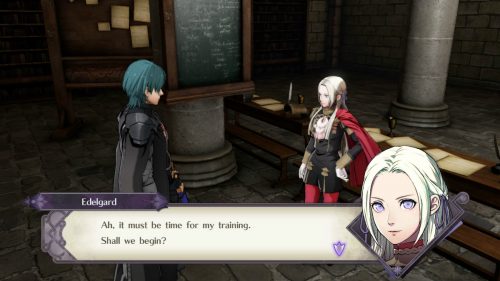
The Seminar option is where you or other faculty members can give a specialised lecture which boosts the abilities of a small selection of students and increases their motivation. Rest increases the motivation of students and repairs certain special weapons. It’s easy to get into a pattern of how you progress through the month, for example, I would often begin exploring the Academy just to close off the story mission from the previous month and listen to my students’ thoughts. Then I would do some battles the next week to level up my students and then rest on the final Sunday before the next story mission. Fire Emblem: Three Houses also features online functionality where you’re informed of what other players around the world are doing on their Sundays, offering guidance if you are unsure how you should progress.
The battle system will be familiar to those who have played previous Fire Emblem games. Battles are turn-based with units moving around a grid to fight opponents. Some units, such as Swordmasters, can only attack opponents that are in the adjacent square to their position. Other units, such as Archers who attack with bow and arrows, can damage opponents two or more squares away. Each unit has their own strengths and weaknesses to other unit matchups, so there’s an emphasis on strategy to win battles.
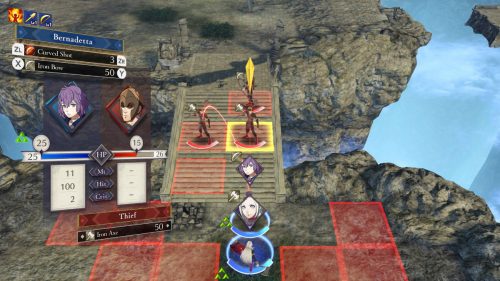
By default the camera is positioned in a top-down perspective when you’re moving your units but when there is a clash the camera switches to a third person perspective so you can see the fight unfold. It is also possible to have a third person camera during the regular movement phase. This lets you get a better look at the character models while freely controlling their movement, but also still being limited to their range on the grid. There’s a mini map displayed which helps identify unit classes and where people are located on the battlefield, but it’s not quite as intuitive as the traditional top-down perspective which allows you to observe the entire battlefield at a quick glance and plan ahead.
A new feature is the ability to assign battalions to units. These not only apply buffs to characters but also give them the ability to perform Gambit moves during battle. Gambit moves offer strategic advantages, such as stunning an enemy so they cannot move during their next turn or healing allies.
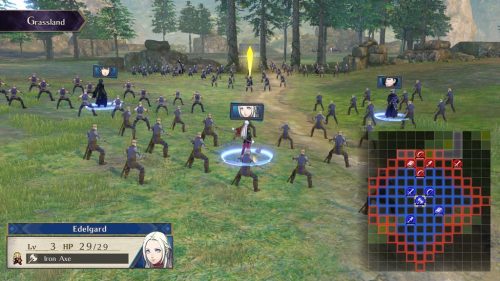
At times you will also encounter mythical beasts on the battlefield which are different than regular units. The beasts have shields which protect them from attacks, and they have multiple health meters to deplete. To name a few of the creatures, there are dragons, werewolves, strange demonic beings and giant vultures. The fights are quite tough, though a good tactic is to attack the beasts with multiple units at once rather than leaving one poor soul to fend for themselves.
Like other games in the series, Fire Emblem: Three Houses features a Casual Mode and a Classic mode. In Casual Mode if a unit falls in battle they merely retreat until the next fight. In Classic Mode they will have a permanent death, which adds an extra layer of caution for players. A new feature which will benefit newcomers is the ability ability to turn back time with a quick press of the L1 button. If you’ve unintentionally moved a unit to the wrong location or simply want to try performing a little better, this ability makes that possible.

Visually the game features cel-shaded graphics which match the anime-inspired cutscenes that are used at various moments throughout the campaign. The models look great, with each character having a distinctive, stylish and vibrant appearance. Unfortunately some of the textures used for the battlefield environments are just plain ugly and uninspiring. They lack detail and don’t quite capture the same flare as the character models. There are also some framerate drop issues when exploring the Officer’s Academy, particularly when you enter larger outdoor areas. Character pop-in is also an issue when exploring the Academy – quite often I was able to start conversations with NPCs before their models would appear on-screen! As is the case with many titles on the Switch, while the game is completely functional in handheld mode it can be quite straining on your eyes when trying to read text on the smaller screen of the system. These are by no means game breaking issues, but they do present annoyance with what is otherwise a flawless experience.
A majority of the game supports full voice acting in both English and Japanese. Some of the English voice overs are European accents which suits the setting. One particular element I enjoyed was one of my students that came from another land and wasn’t familiar with the Fódlan language, so they consistently spoke in semi-broken English which was a fantastic touch. The orchestrated soundtrack is simple but pleasant, providing suitable background music for almost every occasion. During sadder moments in the story there are changes to the tone while progressing through the next calendar month. While not too memorable in its own right, it’s a solid effort overall.

Fire Emblem: Three Houses is arguably the definitive entry of the franchise. The character development is deep, there are more customisation options than in previous games and there are small but meaningful additions to the tried and true combat system. The game is also accessible to newcomers thanks to the discreet advice it gives to players in how they can balance their teams, the turn back time ability, and online functionality showing how other players are proceeding with their time at the Officer’s Academy. This is another must have title for the Nintendo Switch.
- Deep character development - Accessible gameplay options for newcomers - More customisation options than previous Fire Emblem games - High replay value
- Some framerate issues when exploring the Academy - Character pop-in - Text is very small when playing in handheld mode - Uninspiring textures

